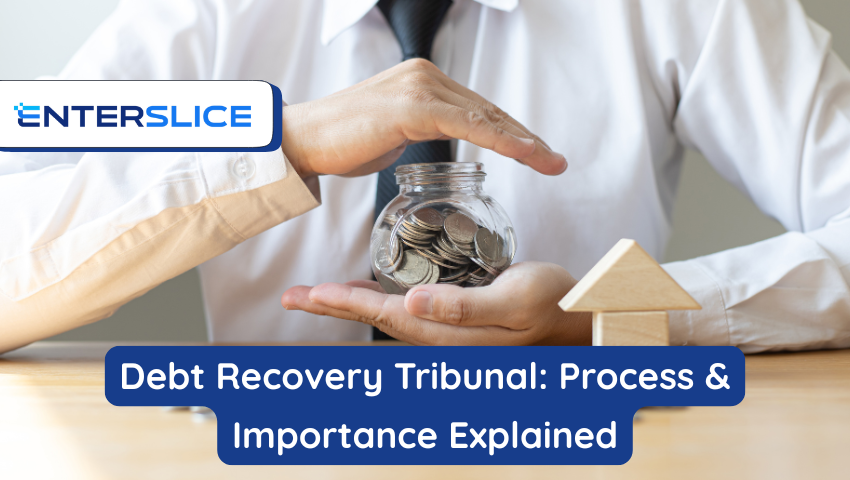Financial disputes are a common challenge in the business world, and recovering debts can often feel like a daunting task. This is where the Debt Recovery Tribunal (DRT) comes into play, offering a legal mechanism to help lenders recover outstanding loans and dues efficiently. In this guide, we will explore what a Debt Recovery Tribunal is, how it functions, and how you can approach the process effectively.
What is a Debt Recovery Tribunal?
A Debt Recovery Tribunal is a specialized quasi-judicial body in India established under the Recovery of Debts Due to Banks and Financial Institutions Act, 1993. Its primary purpose is to resolve disputes between creditors and debtors, particularly in cases where banks or financial institutions face difficulties recovering loans. Unlike civil courts, DRTs are designed to provide a faster, more streamlined resolution process.
Who Can Approach a Debt Recovery Tribunal?
Primarily, banks and financial institutions can file cases with a DRT to recover debts exceeding a specified limit. Additionally, individuals or companies who have lent money under formal agreements may also approach the tribunal in certain cases. It is essential to note that DRTs do not entertain matters related to small, personal disputes; they are specifically meant for substantial financial claims.
How Does the Debt Recovery Tribunal Work?
The process of approaching a Debt Recovery Tribunal involves several steps:
-
Filing an Application: The creditor submits an application to the tribunal along with all necessary documents, including the loan agreement, repayment history, and correspondence.
-
Hearing Process: The tribunal reviews the application and schedules hearings where both the creditor and debtor can present their case.
-
Issuance of Orders: Based on the evidence and arguments, the tribunal issues an order for recovery of the debt. This may include directives for repayment schedules, attachment of assets, or other legal remedies.
-
Appeals: If either party is dissatisfied with the tribunal’s decision, they may appeal to the Debt Recovery Appellate Tribunal (DRAT) within the specified timeframe.
Benefits of Using a Debt Recovery Tribunal
Opting for the DRT has several advantages over traditional civil litigation:
-
Faster Resolution: DRTs aim to provide quicker decisions compared to regular courts.
-
Expert Handling: Judges and staff at DRTs have specialized knowledge in banking and financial matters, ensuring informed decisions.
-
Reduced Burden on Civil Courts: By directing financial disputes to DRTs, the regular civil court system remains less congested.
Common Challenges and How to Navigate Them
While DRTs are designed for efficiency, there are some challenges you may encounter:
-
Documentation Issues: Incomplete or unclear documentation can delay proceedings. Ensure all agreements, receipts, and communications are properly maintained.
-
Debtor Non-Cooperation: In cases where the debtor is uncooperative, legal mechanisms like asset attachment may be necessary.
-
Appeals and Delays: Though faster than civil courts, complex cases may still face delays due to appeals or procedural requirements.
Being proactive, organized, and understanding the tribunal’s procedures can significantly improve the chances of a smooth recovery process.
Tips for a Successful Debt Recovery Tribunal Case
- Maintain clear and complete financial records.
- Hire experienced legal counsel familiar with DRT procedures.
- Prepare for hearings by organizing evidence logically.
- Stay updated on legal amendments affecting debt recovery.
Conclusion
The Debt Recovery Tribunal plays a critical role in resolving financial disputes and ensuring creditors can recover outstanding dues efficiently. By understanding its processes, preparing thoroughly, and seeking professional guidance, both lenders and borrowers can navigate debt recovery matters more effectively.
FAQs
1. What is the minimum debt amount for filing a case with a DRT?
Typically, debts above a certain threshold specified under the RDB Act can be filed with a DRT. It is advisable to check current limits before filing.
2. Can individuals approach a Debt Recovery Tribunal?
Primarily, DRTs are meant for banks and financial institutions, but under certain conditions, private lenders can also approach the tribunal.
3. How long does it take for a DRT case to be resolved?
The resolution timeline varies depending on the complexity of the case, but DRTs generally aim to provide faster decisions than civil courts.
4. Can the DRT attach a debtor’s property for recovery?
Yes, the tribunal has the authority to issue orders including attachment of assets or property to recover dues.

